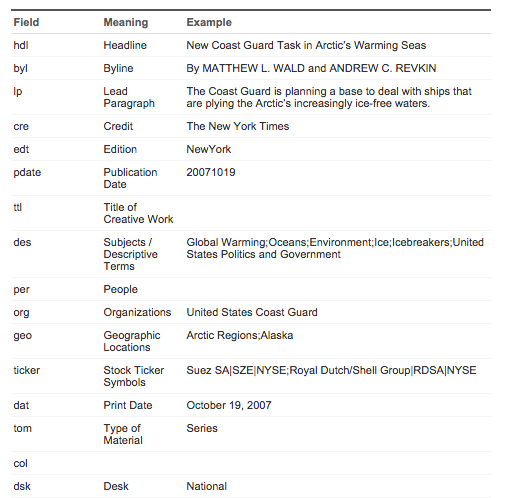Are You Making the Most of Your MetaData?
Everyone forgets about metadata,” said John O’Donovan, chief technology officer at The Financial Times. “They think they can just make stuff and then forget about how it is organized [. . .] But all your assets are useless to you unless you have metadata — your archive is full of stuff that is of no value because you can’t find it and don’t know what it’s about.
New York Times Innovation Report
The articles and posts on your site are more than just the lede, sub-head, and paragraphs below. Each article comes complete with a set of metadata that helps categorize the article for various systems including the CMS, search crawlers, and analytics platforms. But metadata can be used for more than categorizing topical keywords or SEO.
The Innovation Report referenced in the quote above was not the first time the New York Times extolled the virtues of metadata. Jacob Harris, a senior software architect and news hacker at the publication through April 2015, noted the importance of metadata in 2007. He summarized metadata tags as “data about the data of the content,” and showed a breakdown of the existing tags available on a standard NYTimes article.

Harris’ example of metadata includes keyword tags such as “Global Warming,” Oceans,” Environment,” and more. But the New York Times’ tagging effort extends further, with tags to identify identifying the regions mentioned in the piece (Arctic Regions, Alaska), the organizations it references (U.S. Coast Guard), and even the type of article (Series). Harris concludes that this information could be used to create relationships between the articles, but notes that he hopes it doesn’t end there.
“All fascinating,” he says, “but I feel like we’ve just scratched the surface of what is possible with the metadata here, and I’d personally like to see more.”
Despite this early call to arms, our recent Authority Report didn’t find a lot of evidence that tagging has become a central part of most publishers’ strategies, but instead is likely still a unstructured attempt at a deeper categorization of content. A few outstanding use cases for tags were reported on by Abigail Edge of The Media Briefing, including:
- Monetization: The Globe & Mail uses tags as part of its paywall strategy.
- Native advertising: The Huffington Post uses a variety of sponsored tags to identify trends in Partner Studio content and manage individual campaigns.
- Read Time: Lehigh (The Brown and White) uses tags to pinpoint estimated read times.
- Content Type: Ars Technica uses tags to identify types of articles and compare how readers spend time with them. This helps the editorial team decide how much resources to devote to either type (or new types) of content:

Joshua Lasky emphasizes the importance of using a tagging strategy to help grow and understand audiences in his piece on Medium. He points out that it’s not the tags themselves, but the analysis of those tags and metadata that matters:
There’s a certain amount of content optimization that can be done here. Think if you were to tag articles based on whether they included a video; you could then analyze whether having this element improved article performance. This would help you to decide whether it made sense to embed more videos in the future.
And what about the New York Times? Have they taken their own advice? The past year and change since the Innovation Report was released, we’ve seen the Times not only use the metadata for strategy, but incorporate it into their R&D and product development. The company’s “package mapper,” which Director of News Analytics James Robinson talked about last year, was based on tags that were associated with a post’s URL and designed to help readers find related content that came from different sections of the news website. What else can we expect to see from tags?
Are you using tags in a unique way? We want to hear about it. Take our two-minute “tags” survey and let us know how your organization thinks about tagging. Take the Survey!